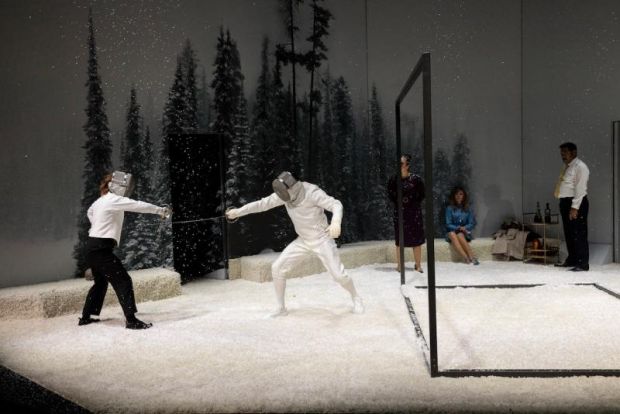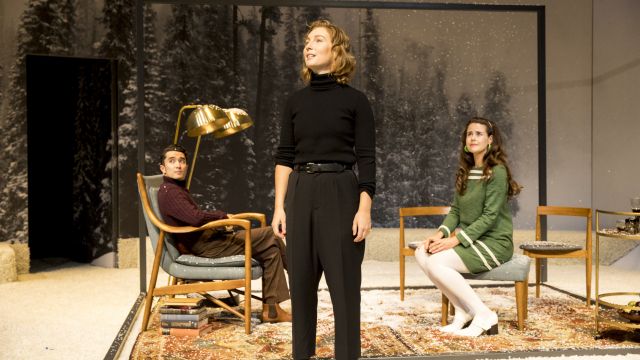Hamlet
A drop-dead brilliant performance by Harriet Gordon-Anderson is the shining beacon at the centre of Bell Shakespeare’s latest Hamlet. Back in February 2020, this production premiered at the Opera House as the first play of Bell Shakespeare’s 30th anniversary year. A fortnight later it was forced into hiatus by Australia’s first lockdown. It’s taken this long for the production to get the run it deserves.

Harriet Gordon-Anderson is wonderful in the lead role, giving an easy, conversational cadence to text I’m still primed to expect in declarative tones. She breathes new life into the two most famous soliloquies with a natural yet poetic delivery. Gordon-Anderson’s Hamlet is dangerously depressed, and that feeds his uncontrolled rage and delusional reasoning. This makes the response by Claudius (a fine performance by Ray Chong Nee) heartless but entirely rational given the mortal threat Hamlet poses to him. Perhaps Claudius’ reaction to the play is at the implied accusation rather than a demonstration of guilt, which leaves open the interpretation that Claudius might not even have murdered his brother after all. Gertrude (Lucy Bell) is terrified not by Claudius, but by her own son. Ophelia (Rose Riley) is naïve while Polonius (Robert Menzies) is likeable and more foolish than pompous, making it more tragic when the family is caught in the crossfire. These character decisions exposed symmetries: Hamlet’s white hot anger with Claudius ice cold response; the reaction to the father’s death is in Hamlet’s case depression, while in Ophelia’s psychosis; Hamlet aims destructive energy outward, while Ophelia’s is aimed inward.

Peter Evans’ trademark bold editing, cinematic pacing and interesting characterizations are all present here. Most of the decisions have paid off: the edit improved clarity while leaving the beauty of the language intact, the pace doesn’t flag for a moment and the characters were rich and complex. I left with a different interpretation of the motivations of the characters than I had had before. There were a few moments of dark humour—Hamlet dragging Polonius out on the curtain and Horatio and the gravediggers’ revoluted recoil at Hamlet fishing up Yorick’s skull were nice comic touches.

The directorial decisions that didn’t pay off hugely also didn’t detract. The choice of the late-1960s as the setting seems to have been largely aesthetic and on that basis alone it worked (concepts like “get thee to a nunnery” and “free love era” are at odds). The opening scene had the guards and ghost in half-light in front of and behind the other cast, who were stationary on the centre of the stage. It made for a cluttered visual with the attention drawn to the still figures and away from the action—less spooky, more messy. I have probably seen one too many slowly pacing Shakespearian specters to take them seriously, so I must admit had to stifle a giggle when it appeared. But these are trivial quibbles in the light of the brilliance of the performances.

A clever and enlightening interpretation, worth every second of the 2-year wait.
Cathy Bannister
Photographer: Brett Boardman.
Subscribe to our E-Newsletter, buy our latest print edition or find a Performing Arts book at Book Nook.

